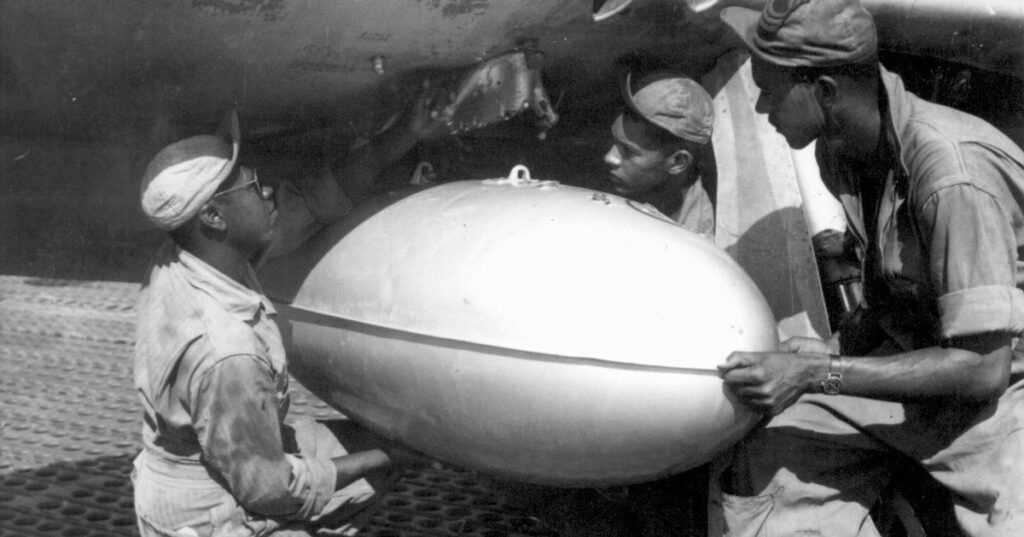This article by Ian D’Costa originally appeared on We Are the Mighty
If you pay attention, you might sometimes see long, cigar-shaped pods firmly attached to the undersides of classic fighter and attack aircraft, sometimes with unit markings on them.
Known as “drop tanks,” these simple devices extend the range of the aircraft they’re hooked up to by carrying extra usable fuel. Back during World War II, however, attack pilots found a secondary use for drop tanks as improvised bombs, used to bombard enemy ground positions.
Drop tanks became popular in the late 1930s as a means for fighters to carry more fuel for longer escort and patrol missions. Easily installed and removed, they were a quick solution for the burgeoning Luftwaffe’s fighter and dive bomber fleets, which would prove to be instrumental in the opening months of WWII.
By the onset of WWII, air forces with both the Axis and Allies were experimenting with the use of drop tanks in regular combat operations. In the European theater, British and German pilots stuck to using their drop tanks as range-extenders. American fighter pilots changed the game.

(US Air Force)
Though it wasn’t common practice, P-47 Thunderbolt pilots were noted for their creativity in combat, switching their fuel feed selector to their internal tanks while making a low pass over an enemy position. With relative precision, they would jettison their drop tanks, still filled with a decent amount of fuel, before climbing away.
After releasing their tanks, pilots would swoop back around and line up again with their target. If they timed it right and aimed well, a long burst from their cannons would ignite the fuel left inside the tanks, blowing them up like firebombs.
This didn’t always work, however, especially as paper tanks became popular during the war as a method of conserving metal. So, by the end of the war, American crews in both the European and Pacific theaters had to refine their drop-tank technique.
Instead of pilots peppering the tanks with shells from their cannons, they’d simply fill up the tanks with a volatile mixture of fuel and other ingredients to form rudimentary napalm bombs, which would detonate upon impact.

(US Air Force)
By the time the Korean War started, the newly-formed US Air Force had cemented the practice of filling drop tanks with napalm and using them as makeshift bombs for low-level close air support missions. According to Robert Neer in his book, Napalm: An American Biography, British statesman Winston Churchill notably decried the practice of using napalm during the Korean conflict, calling it cruel and noting the increased likelihood of collateral damage and casualties during napalm strikes.
In the Vietnam War, the use of napalm expanded greatly, though factories now began building bombs specifically designed to carry napalm internally. Today, the US military has virtually ceased using napalm as a weapon. Here’s what life is like for US Army Tankers, today.


